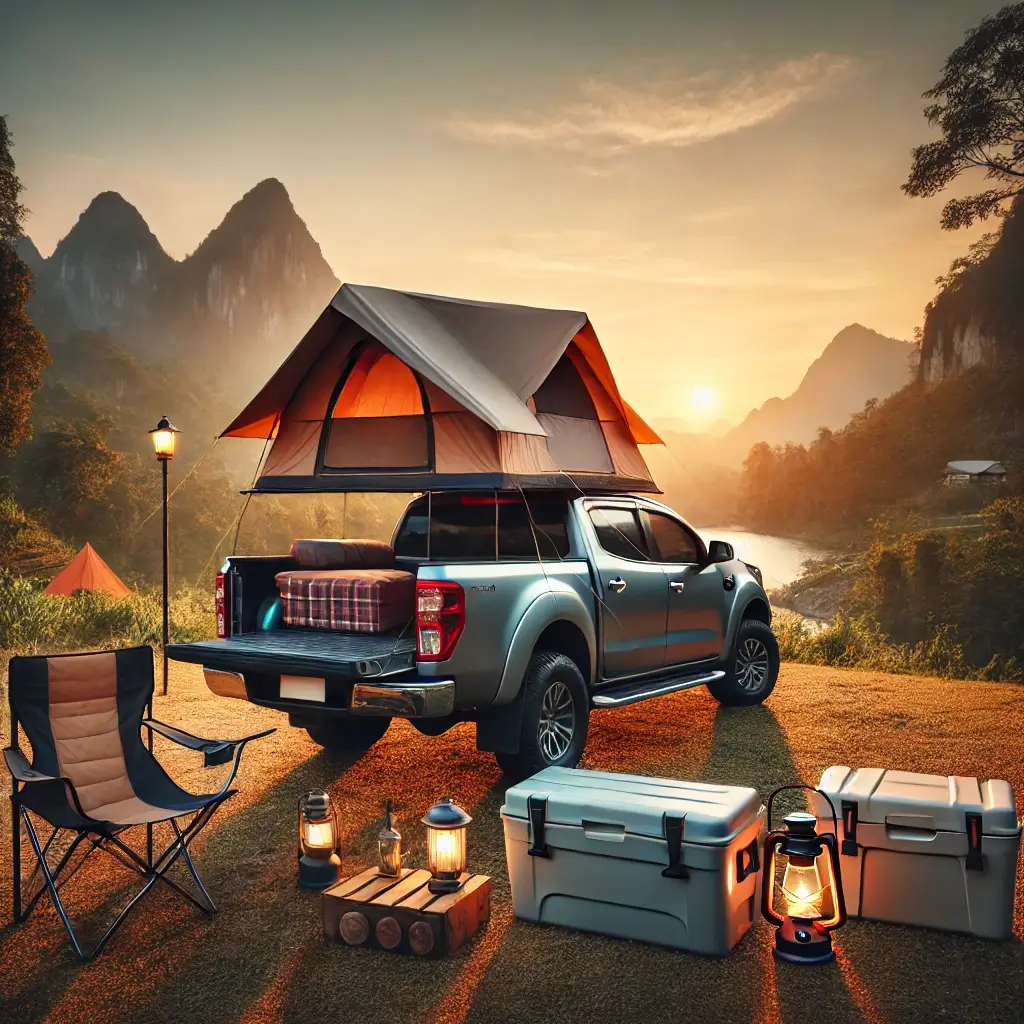Planning a weekend in the mountains with your truck bed tent? Excellent choice! Truck bed camping combines the comfort of your vehicle with the freedom of camping in remote locations. With some thoughtful preparation, you can create a cozy, functional basecamp to enjoy those fresh mountain breezes, breathtaking views, and outdoor adventures.
Here’s a complete guide on how to set up your truck bed tent for a successful mountain weekend, covering gear essentials, setup techniques, and tips for maximizing comfort and convenience.
Why Choose a Truck Bed Tent?
Truck bed tents are perfect for weekend trips, especially in mountainous regions. They lift you off the ground, keeping you clear of uneven terrain, mud, or wildlife. They’re easy to set up, provide a secure sleeping area, and allow you to keep all your gear organized inside your truck. Plus, you can park almost anywhere and camp with an incredible view!
What You’ll Need for a Successful Setup
Before heading out to the mountains, make sure you have the right gear to set up your truck bed tent efficiently. Here’s a checklist:
- Truck Bed Tent: Make sure your tent is compatible with your truck’s bed size and model.
- Sleeping Gear: Bring a comfortable air mattress or foam sleeping pad specifically designed for truck beds. Don’t forget your sleeping bag and pillows!
- Tarp or Ground Cover: Lay down a tarp inside the truck bed to add an extra layer of insulation and moisture protection.
- Tie-down Straps or Bungee Cords: These are helpful for securing your gear inside the truck bed and for keeping your tent firmly attached to your truck.
- Camp Lighting: Lanterns, string lights, or a headlamp are essential for nighttime activities.
- Cooler and Food Storage: You’ll want a good cooler to store food and drinks, and a secure method for keeping bears and other wildlife at bay.
- Camp Chairs and Table: Even with a cozy truck bed tent, you’ll want a place to sit and relax outside.
Step-by-Step Setup Instructions
Now that you’ve gathered all your gear, here’s how to set up your truck bed tent once you reach your mountain campsite.
1. Find the Perfect Spot
When you’re in the mountains, finding a flat and safe spot to park is crucial. Look for an area with level ground, minimal wind exposure, and no risk of falling rocks or branches. If possible, park with your truck bed facing the best view for a scenic wake-up. Double-check local camping regulations, especially if you’re setting up in a national park or designated wilderness area.
2. Prep the Truck Bed
Before you set up your tent, make sure your truck bed is clear of debris and dry. If you’re using a liner or a mat, ensure it’s in place. Laying down a tarp under the tent can add an extra layer of protection against moisture and cold. Additionally, this is a good time to organize any gear you plan to store under your sleeping area. Keep items like camp chairs, kitchen gear, and coolers handy, but secure heavier items so they don’t shift.
3. Assemble the Tent
Once the truck bed is ready, follow the instructions for your specific truck bed tent model. Most tents attach directly to the sides of the truck with clips or straps, while the tent poles form the frame. It’s often easiest to assemble the poles outside the truck bed, then attach them to the tent once everything is laid out.
Pro Tip: If you’re setting up alone, work methodically by attaching one corner of the tent to your truck bed at a time. This will prevent the tent from shifting around as you assemble it.
4. Secure the Tent
Make sure all straps and buckles are tightened around the edges of your truck bed to ensure a snug fit. Pay extra attention to the tent’s rainfly, especially in mountain regions where weather can change rapidly. You don’t want any leaks during a surprise storm. Most rainflies attach over the top of the tent and secure under the truck with extra straps or bungee cords.
5. Inflate Your Mattress or Set Up Sleeping Gear
Once the tent is secured, move inside the tent to arrange your sleeping setup. Many truck bed tents are designed to accommodate a truck-bed-sized air mattress or foam pad, which helps maximize your comfort and use of space. Position the mattress so it fits snugly against the edges of the bed. Layer blankets or a sleeping bag on top, and add pillows for extra comfort. Since mountain temperatures can dip at night, use insulated sleeping bags rated for lower temperatures to stay warm.


